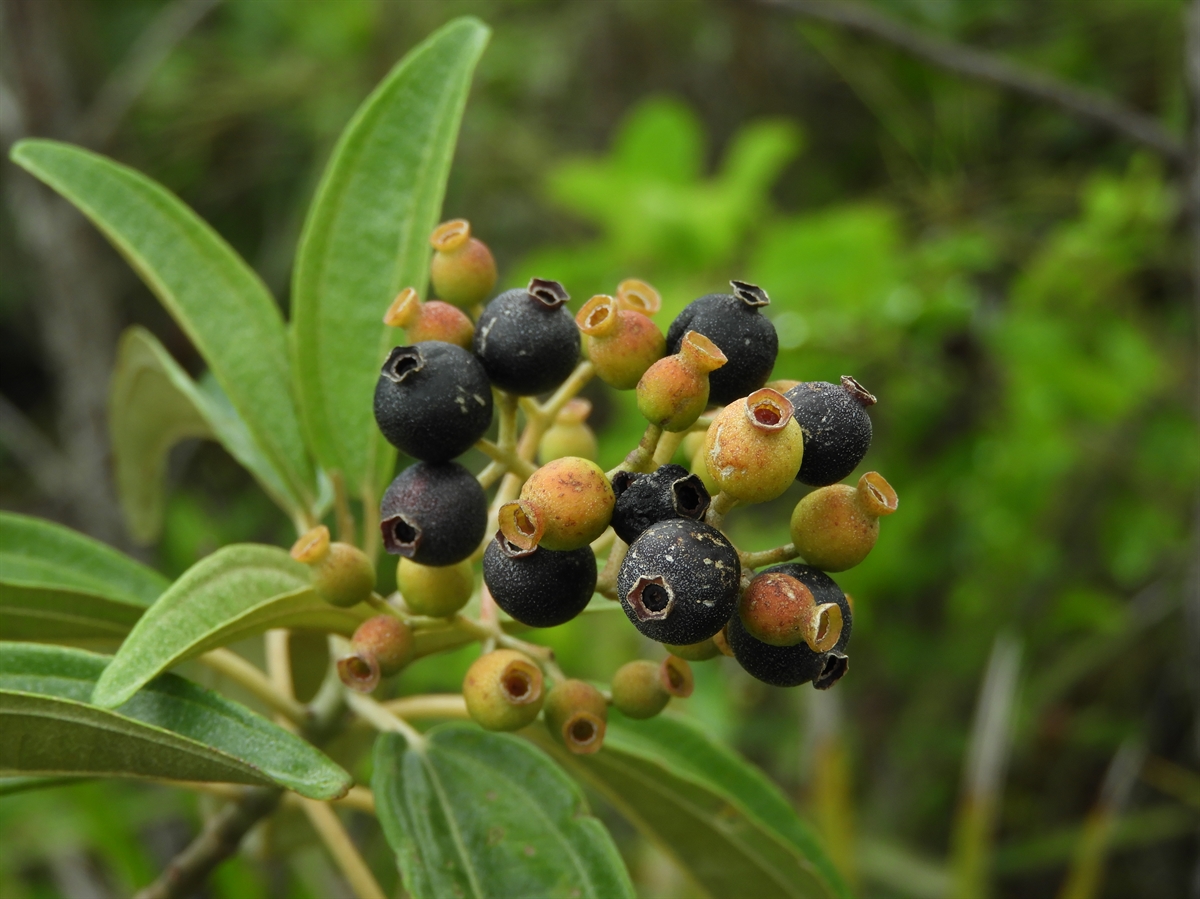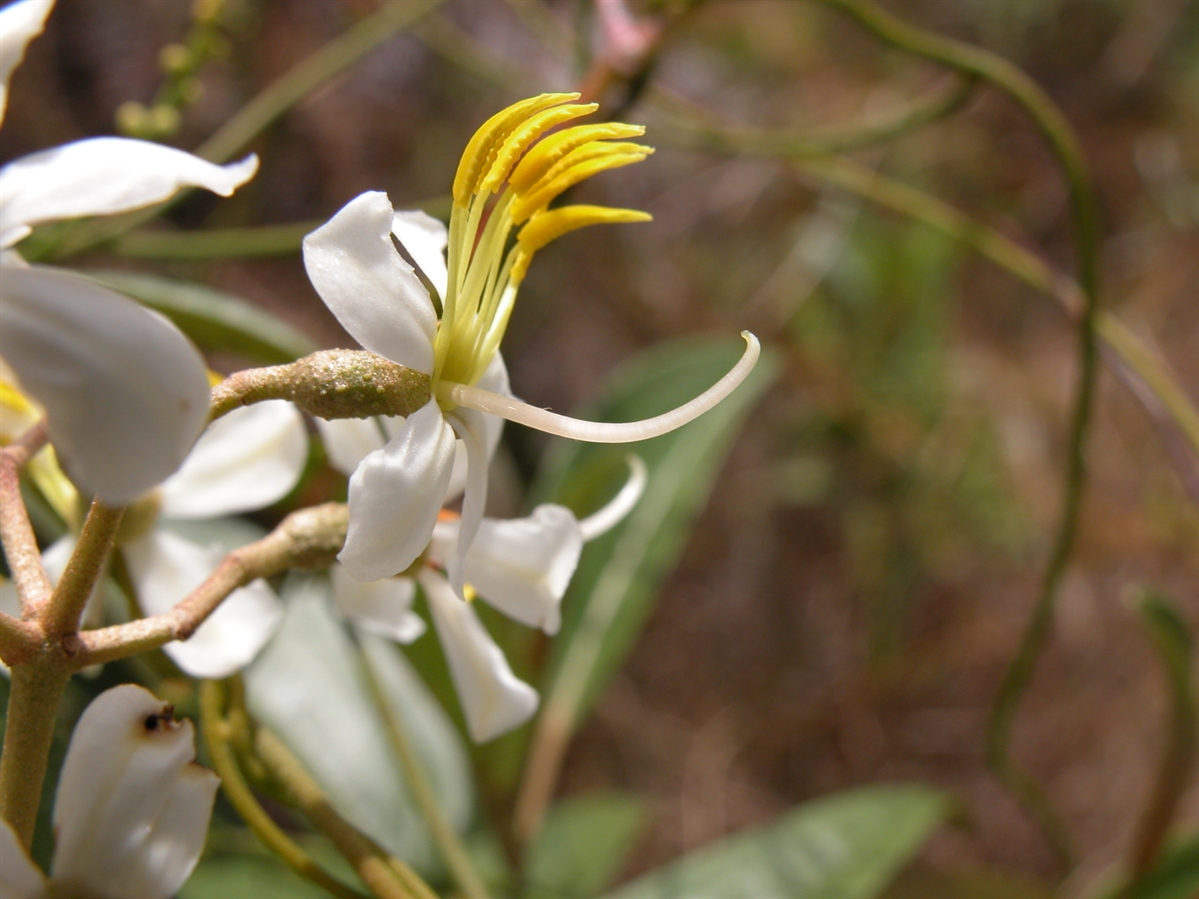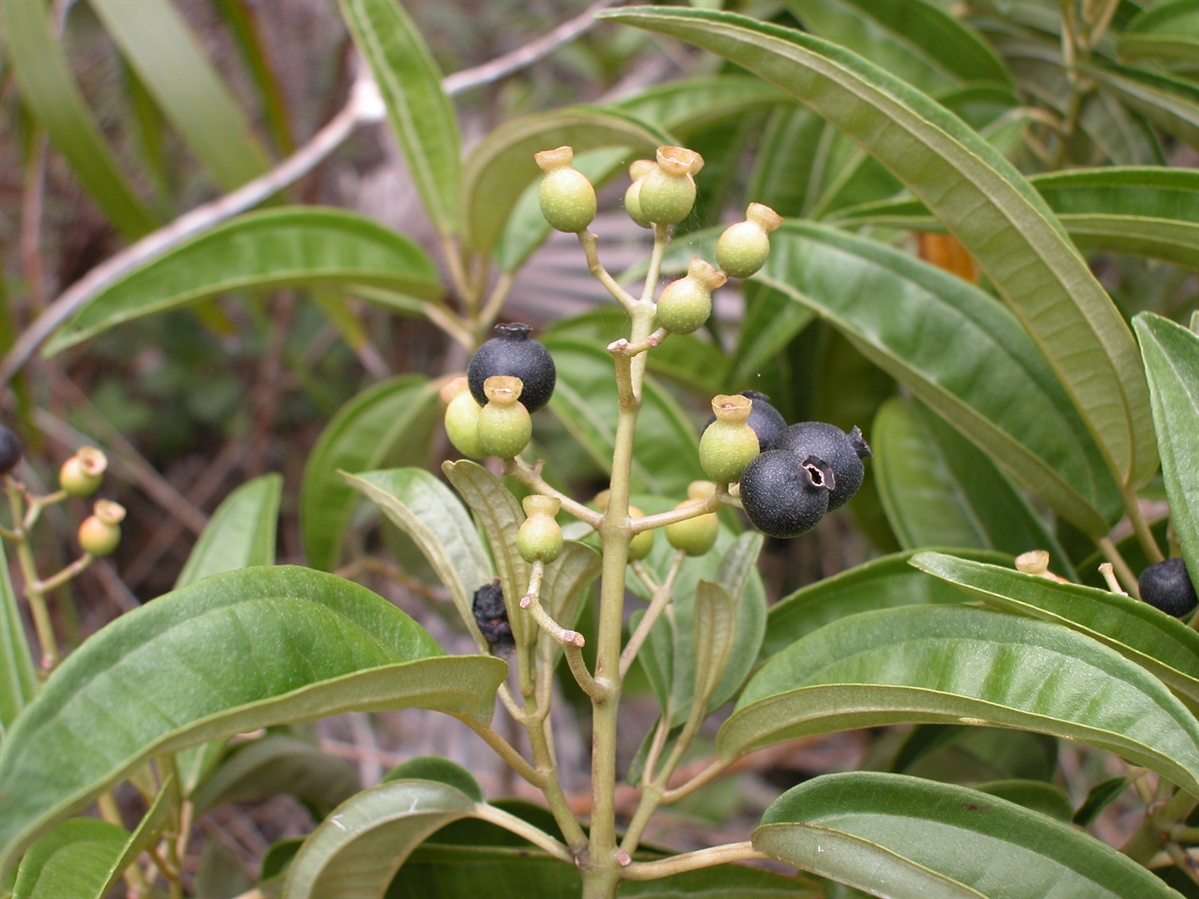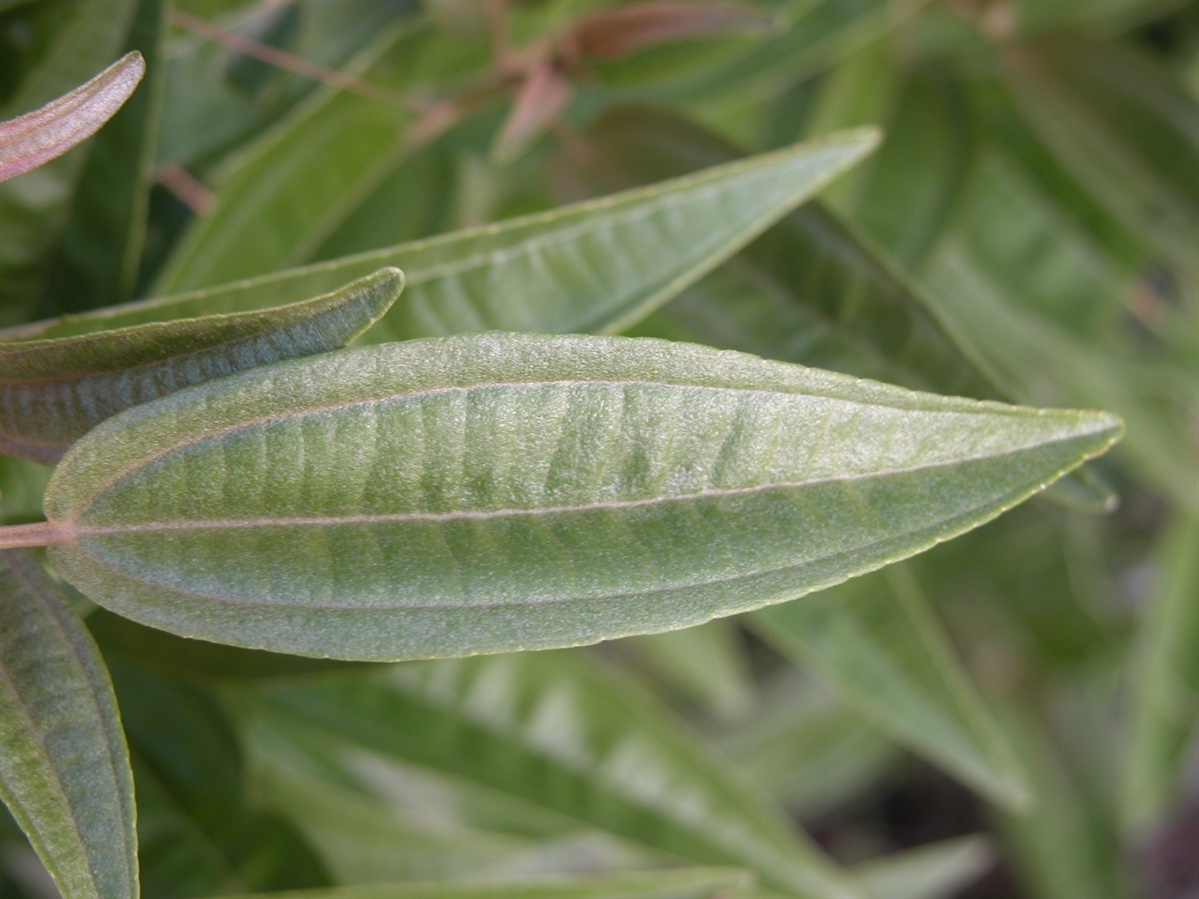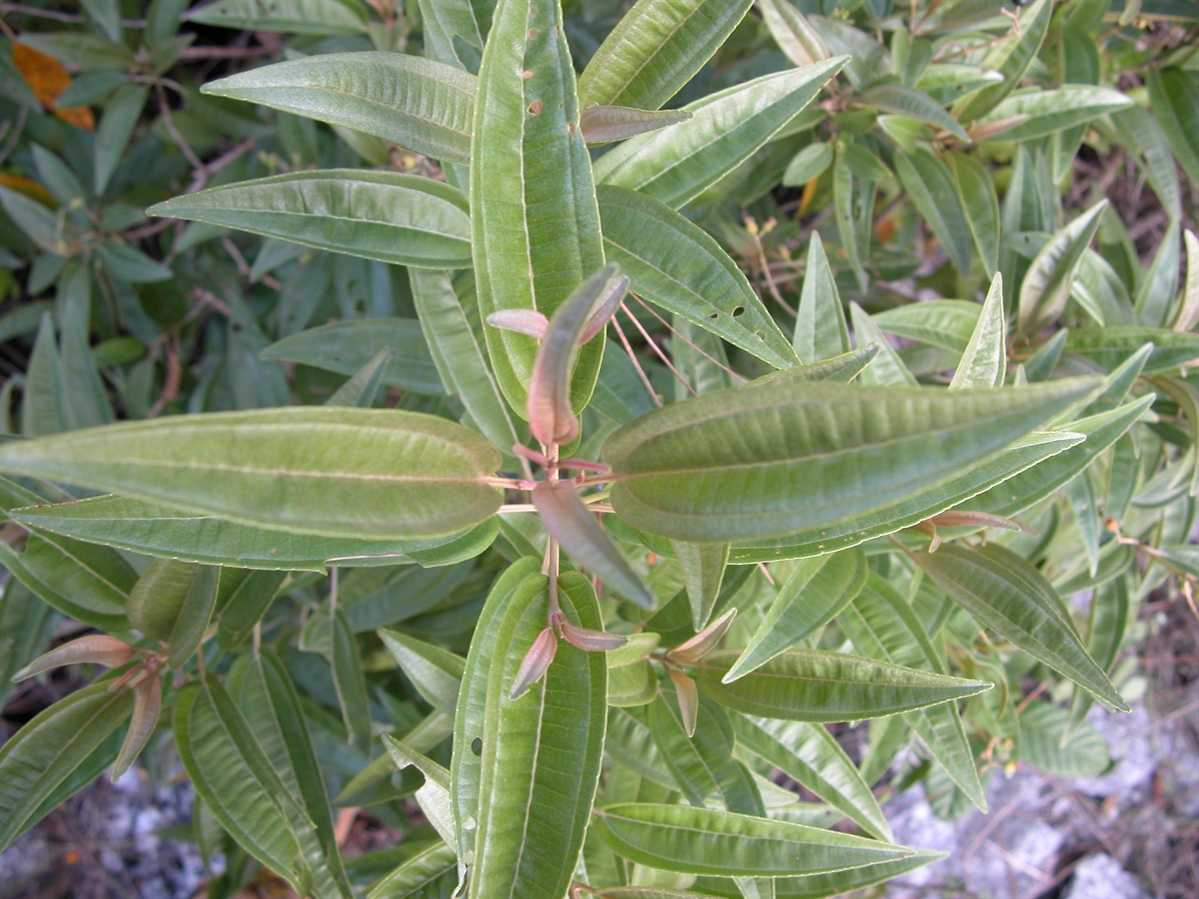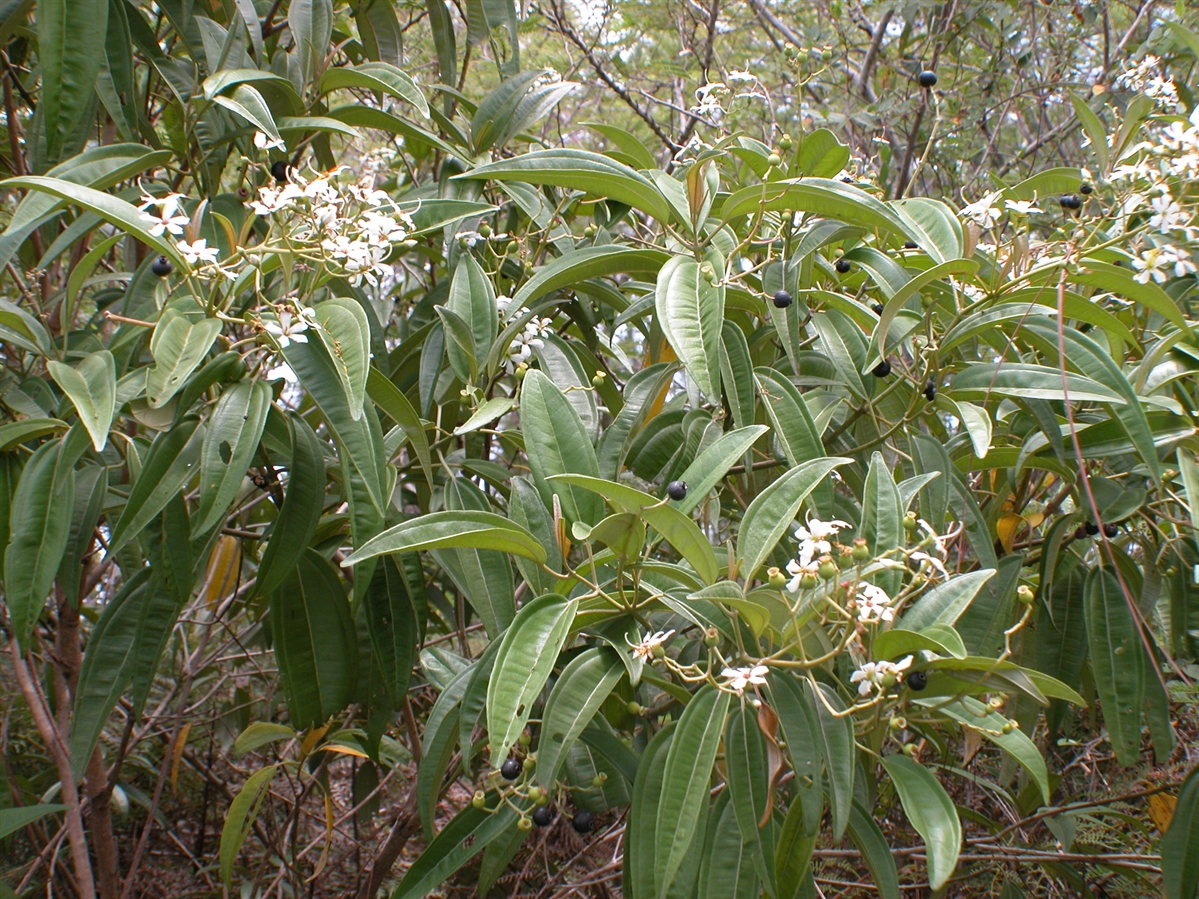Habit: Miconia bicolor grows as a shrub to small tree to 5 m in height. The leaves are arranged oppositely, to 20 cm in length, lanceolate, an acuminate leaf apex, and an entire margin and with 3 primary veins. The lateral veins are at a 90-degree angle to the primary veins.
The complete, perfect, zygomorphic flowers are arranged in panicles. The calyx has 5, fused, green sepals forming a tube. The corolla has 5, white, unfused petals. There are 8 stamens surrounding the carpel with the filament and anthers to the upper portion of the flower. The anthers are bright yellow. The ovary is inferior with 3 locules and numerous seeds. The fruit is a purple berry at maturity.
Habitat: Miconia bicolor grows in Dry Broadleaf Evergreen Formation – Forests/Shrubalnds (coppice/scrubland) and Pine Woodlands.
Distribution: Miconia bicolor occurs on the northern pine islands of the Lucayan Archipelago as well as Florida and Cuba. It is now considered an invasive species in Hawaii.
Medicinal/Cultural/Economic usage: Miconia bicolor is used in the Lucayan Archipelago to treat colds and coughs as well as night sweats.
Miconia bicolor is used in the horticultural industry for its showy contrasting white and yellow flowers.
